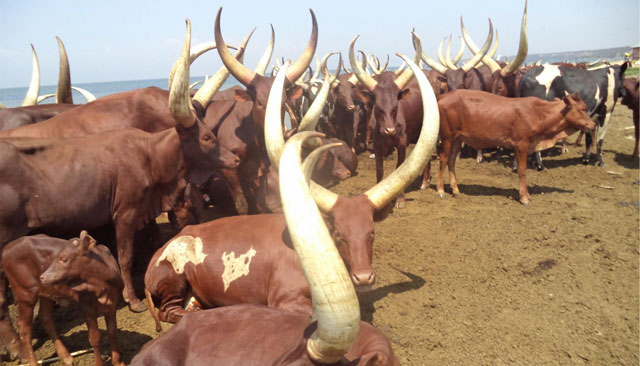
Ntoroko, Uganda | THE INDEPENDENT | Ntoroko district has imposed a two-week quarantine following the outbreak of Foot and Mouth disease- FMD. The most affected areas are Butungama, Bweramule, Rwebisengo, Karugutu and Lake Semuliki.
According to the guidelines, the movement of livestock and livestock products into and out of Ntoroko district to other districts is banned.
District leaders note that the outbreak is attributed to Congolese and refugees who have crossed into the district with their infected animals and local pastoralists who have been grazing from Democratic Republic of Congo-DRC.
Eddy Kabugho, district vice chairperson says that the ban is meant to contain further spread of the disease as they await assistance from the Ministry of Agriculture, Animal Industry and Fisheries.
The outbreak of FMD and the imposing of quarantine is a big challenge to cattle keepers in the district.
Ntoroko is a predominantly cattle keeping district with cattle keepers comprising 80 percent of the population. Cattle are also a symbol of status to some families.
Dr Patrick Bagonza Businge, the Principal Production Officer Ntoroko district says pastoralists enter the district at night. He says that they cannot create a withholding ground to screen the animals coming from neighbouring districts and DRC.
Stephen Asaba, the chairperson Bweramule sub county welcomes the quarantine, he requests the government to send vaccines to the district as soon as possible. He says the ban on cattle business could hurt the livelihoods of families that depend on the animals.
“Our people here sell their animals so that they can get money to buy food, now those transactions have been put on hold.” Asaba raised the concern.
Friday Swizin, a farmer in Bweramule says he has separated five of his cows after developing FMD signs. He appeals for mass vaccination to help farmers who are financially constrained due to the lockdown.
FMD is a viral disease of cloven-hoofed livestock and wildlife, including cattle, goats, swine, sheep and buffalos. It has occurred several times in Uganda since 1953 when it was first confirmed.
It is characterized by fever and blister-like sores on the tongue and lips, in the mouth, on the teats and between the hooves.
In the early stage, the disease manifests itself among cows through a temperature rise and the animal becomes dull and less productive.
*****
URN
 The Independent Uganda: You get the Truth we Pay the Price
The Independent Uganda: You get the Truth we Pay the Price



